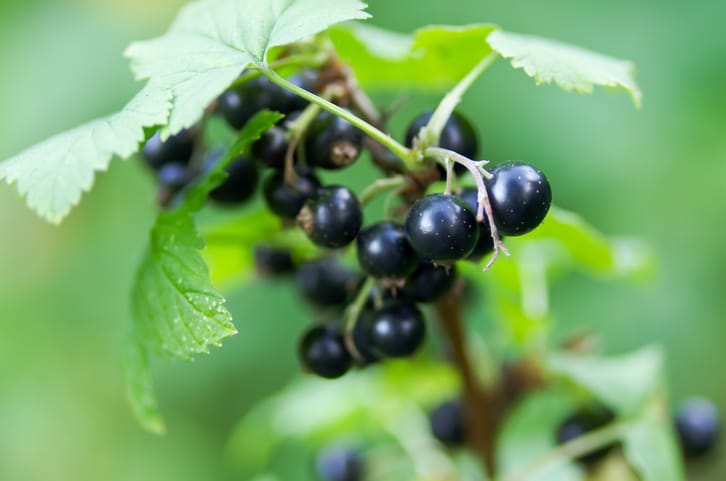Humans have been on earth for about 200,000 years. For the first 188,000 years of our existence, we ate only “wild” foods. These were animals we could kill or plants we could forage.
Over thousands of generations, our bodies evolved specifically to eat those foods. Foods we could hunt or gather became the perfect fuel for homo sapiens.
About 12,000 years ago, humans started farming and domesticating animals. That may seem like a long time ago. But it represents only about 6% of human history.1
Put another way, homo sapiens have been around for about 10,000 generations. For all but the last 600 generations, we were hunter-gatherers.2
Our bodies are still largely those of our hunter-gatherer ancestors. And wild foods may still be our most perfect fuel.
The switch to agriculture transformed human life in many ways. One result was that it reduced the nutritional content of the food we eat.3
Recommended for You: “In my 20 years as a specialist…I’ve never heard of this happening…”
This doctor was stunned after watching a woman near death take back her health from a crippling auto-immune disease. He was even more shocked when he learned she did it using an ancient tonic that can now be found on the shelves of some health food stores. Discover how it can help protect you from illnesses including cancer, Alzheimer’s, heart disease, and more—HERE.
Your Body was Built for Wild Foods
Wild fruits and vegetables are much higher in healthy phytochemicals, antioxidants, and other nutrients than farmed versions.
Plants in the wild are at the mercy of the environment. No one waters or fertilizes them. That means they are put under biological stress. Stress is the trigger that switches on phytochemical production.
Without stress from the environment, plants will grow fast. But they will not allocate as much of their energy to accumulation of internal phytochemicals.4 That’s why wild plants are much richer in health-protective compounds.
Agriculture has selected certain plant traits that make fruits and vegetables most productive and profitable. This generally means sweeter, starchier, plumper produce.
At the same time, agriculture selects against health-protective, complex phytochemical mixtures that exist in wild plants. Plants in orchards or carefully tended fields are protected by stressors like insects, competitive weeds, drought, and lack of fertilizer.5
Jo Robinson is author of a book about wild foods called Eating on the Wild Side. “The research shows we’ve been breeding nutrients out of our plants since we first became farmers 10,000 year ago,” she said. “We didn’t mean to. Basically, we were modifying wild plants to make them better tasting and easier to produce and easier to prepare. It’s only in the last 20 years that we’re understanding the consequences of those early choices.”6
Corn is one typical example. Wild corn has only about a dozen kernels encased in an acorn-like shell. It is about 20% protein and 2% sugar. Modern sweet corn is 2-4% protein and 40% sugar.
5 Wild Foods to Add to Your Diet
Here are five wild foods that are widely available and packed with nutrients:
- Wild blueberries: A diet including wild blueberries is linked to improved motor skills, better memory, and healthy aging. A University of Illinois study in 2000 found that wild blueberries inhibit cancer. Wild blueberries contain more than twice the antioxidants of their farm-grown cousins. Many supermarkets now carry fresh or frozen wild blueberries alongside cultivated varieties. You can also buy them at health food stores.7
- Black currants: They have historically been more popular in Europe than in America. Black currants have four times the vitamin C of oranges. They’ve been shown reduce risk factors for metabolic syndrome, reduce inflammation, and enhance immune response in seniors.8
You can find fresh and dried black currants at health food stores. Add them to smoothies or any recipe that calls for tangy sweetness.
- Muscadine grapes: They are a native American grape that Cherokee and Creek Indians used medicinally. They have 40 times the antioxidant levels of any other grape and six times the resveratrol of farmed red grapes. Muscadines are also high ellagic acid. This compound has been shown to inhibit prostate cancer. A study published in Free Radical Biology and Medicine shows that muscadine grapes prevent vision deterioration linked to aging.9
Some grocery stores and many gourmet markets carry fresh muscadines.
- Wild rice: Wild rice is actually not rice, but a type of grass. It’s unrelated to traditional Asian rice. And it’s much more nutrient-dense. Wild rice has 30 times more antioxidants than white rice. It is also very high in fiber, B vitamins, zinc, magnesium, and protein. It’s available in most large supermarkets.
- Wild salmon: Unless you are a hunter, fish are one of the few animal foods you can get that are truly wild. Wild salmon are perhaps the world’s healthiest seafood. One serving provides 750 mg of omega-3 fatty acids.10 Wild salmon has 32% fewer calories yet more calcium, potassium, zinc, iron than farmed salmon. Farmed salmon also often contains antibiotics, pollutants, and cancer-causing chemicals. It can even contain flame retardants.11,12
Here’s a great healthy recipe using wild blueberries…
Wild Blueberry and Carrot Salad
Juice of 1 lemon
4 tsp maple syrup
1/2 tsp salt
1 cup diced red pepper
2 tsp olive oil
1 1/2 cups frozen wild blueberries
1 bunch of carrots
1/3 cup roasted walnuts
1/2 pineapple pieces
Mix lemon juice with maple syrup, salt, pepper, and oil. Add wild blueberries and let them defrost in the marinade.
Peel carrots and cut them into matchsticks. Chop walnuts and roast in a coated pan.
Cut the pineapple into small cubes. Mix the carrots, walnuts and pineapple pieces and carefully bring them together with the marinated wild blueberries. Serve soon after mixing in berries.13
Like this Article? Forward this article here or Share on Facebook.
References:
1http://anthro.palomar.edu/homo2/mod_homo_4.htm
2http://www.nytimes.com/roomfordebate/2011/05/12/do-we-want-to-be-supersize-humans/we-still-have-the-bodies-of-hunter-gatherers
3http://www.ediblewildfood.com/
4http://www.doctoroz.com/article/why-wild-plants-can-protect-you-cancer?page=1
5http://www.doctoroz.com/article/why-wild-plants-can-protect-you-cancer?page=3
6http://www.npr.org/2013/11/29/247381664/eating-wilder-foods-for-a-healthier-diet
7http://www.wildblueberries.com/the-better-blueberry/faq/
8http://www.healthline.com/health-slideshow/health-benefits-black-currant#9
9http://www.naturalhealth365.com/muscadine-grapes-super-healer.html/
10http://www.womenshealthmag.com/food/best-fish-and-seafood-for-you
11https://health.clevelandclinic.org/2014/03/fish-faceoff-wild-salmon-vs-farmed-salmon/
12http://www.prevention.com/content/which-healthier-wild-salmon-vs-farmed-salmon
13http://www.doctoroz.com/recipe/carrot-salad-wild-blueberries

